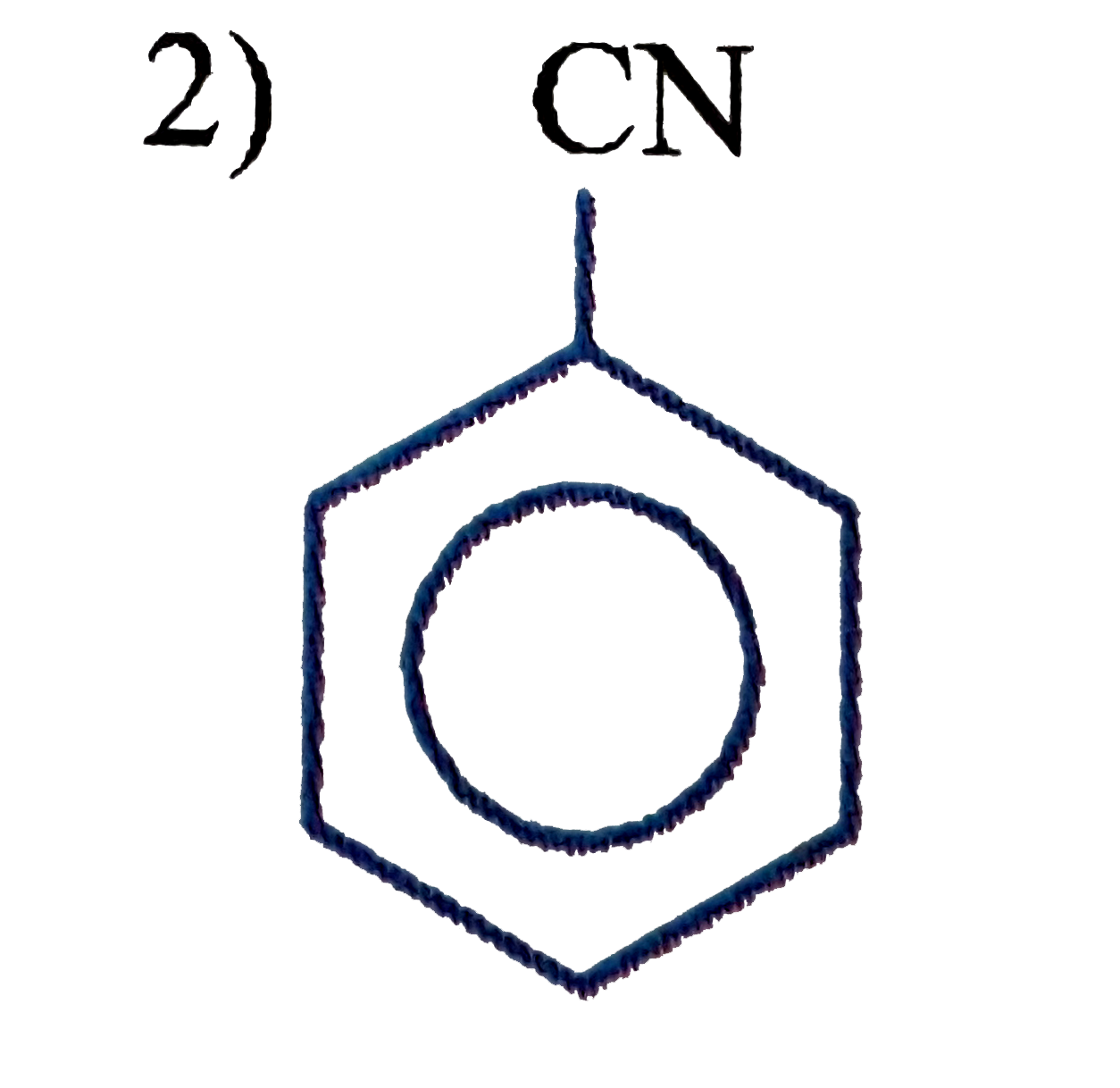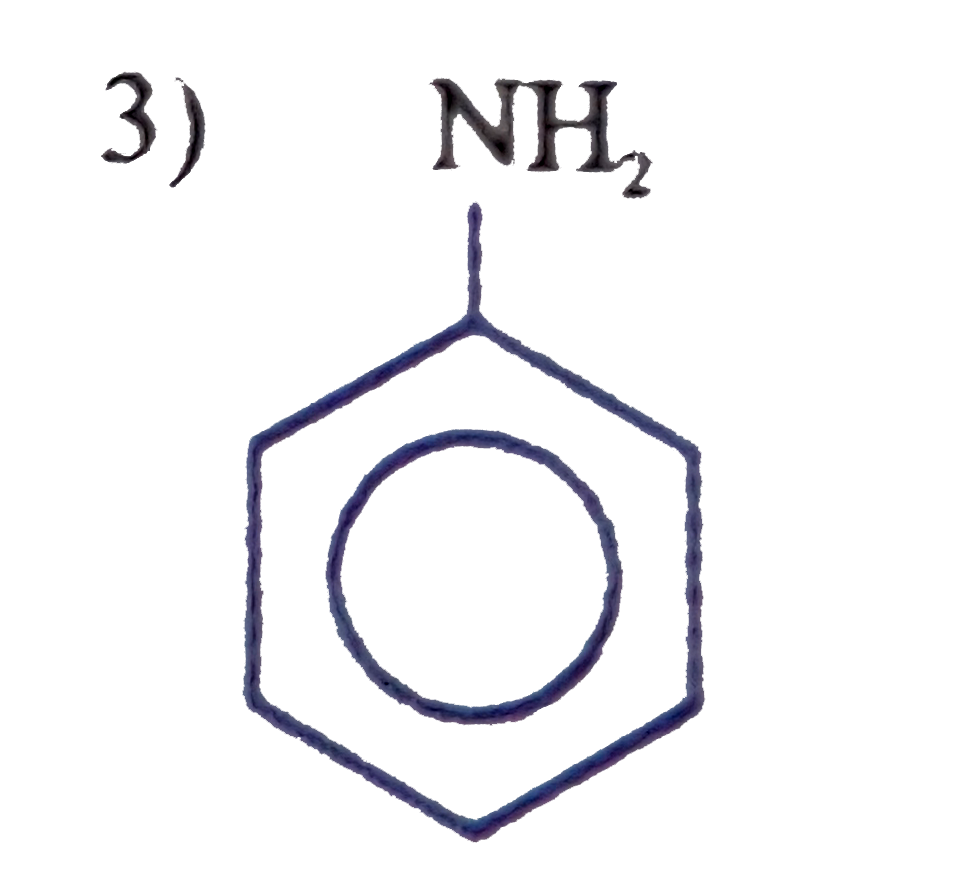An organic compound 'A' on heating with concentrated H2SO4 forms a compound 'B' which on addition of one mole of hydrogen in presence of Ni forms a compound 'C'. One mole of compound 'C' on combustion forms two moles of CO2 and three moles of H2O.
Which of the following represents the compound 'C' ?
C2H6 a saturated hydrocarbon
C2H4 an unsaturated hydrocarbon
HCOOH, an unsaturated acid
C2H5OH , a saturated alcohol
The correct Answer is:A
Step by step video, text & image solution for An organic compound 'A' on heating with concentrated H_(2)SO_(4) forms a compound 'B' which on addition of one mole of hydrogen in presence of Ni forms a compound 'C'. One mole of compound 'C' on combustion forms two moles of CO_(2) and three moles of H_(2)O. Which of the following represents the compound 'C' ? by Chemistry experts to help you in doubts & scoring excellent marks in Class 10 exams.
Updated on:21/07/2023Topper's Solved these Questions
- NSO QUESTION PAPER 2016 SET ABOOK - SCIENCE OLYMPIAD FOUNDATION CHAPTER - NSO QUESTION PAPER 2016 SET AEXERCISE - Achievers Section
3 Videos
- METALS AND NON-METALSBOOK - SCIENCE OLYMPIAD FOUNDATION CHAPTER - METALS AND NON-METALSEXERCISE - ACHIEVERS SECTION (HOTS)
5 Videos
- NSO QUESTION PAPER 2016 SET B BOOK - SCIENCE OLYMPIAD FOUNDATION CHAPTER - NSO QUESTION PAPER 2016 SET B EXERCISE - Achievers Section
2 Videos
Similar Questions
An organic compound A on heating with concentrated H2SO4 forms a compound B which on addition of one mole of hydrogen in presence of Ni forms a compounds C. One mole od compound C on combustion form two moles of CO2 and three moles of H2O. Identify the compounds A,B and C write the chemical equation of the reactions involved.
View SolutionAn organic compound A on heating with concentrated H2SO4 forms a compound B which on addition of one mole of hydrogen in presence of Ni forms a compounds C. One mole od compound C on combustion form two moles of CO2 and three moles of H2O. Identify the compounds A,B and C write the chemical equation of the reactions involved.
View Solution
Knowledge Check
An organic compound 'A' on heating with concentrated H2SO4 forms a compound 'B' which on addition of one mole of hydrogen in presence of Ni forms a compound 'C'. One mole of compound 'C' on combustion forms two moles of CO2 and three moles of H2O.
When 'B' and 'C' are added separately to the test tubes conrtaining orange-brown liquid 'X', the colour disappears in case of 'B' but remains same in case of 'C'. The name of the liquid 'X' and the substance responsible for colour change are respectivelyAalkaline KMnO4 solution and ethanoic acidBalkaline KMnO4 and ethanolCbromine water and 1, 2-dibromoethaneDbromine water and 1, 1, 2, 2-tetrabromoethane.An aromatic compound 'A' on treatment with aqueous ammonia and heating forms compounds 'B' which on heating with Br2 and KOH forms a compound 'C' of molecular formula C6H7N.
The compound 'B' isA B
B C
C D
D
An aromatic compound 'A' on treatment with aqueous ammonia and heating forms compounds 'B' which on heating with Br2 and KOH forms a compound 'C' of molecular formula C6H7N.
The compound 'A' may beA B
B C
C D
D
An organic compound 'X' on heating with conc. H2SO4 forms a compound 'Y' which on addition of one molecule ofhydrogen in the presence of nickel forms a compound 'Z'. One molecule of compound 'Z' on combustion forms two molecules of CO2 and three molecules of H2O. Identify, giving reasons the compounds X,Y and Z. write the chemical equations for the reactions involved.
View SolutionAn organic compound A reacts with sodium hydroxide to form a compound B. B when heated with sodalime forms a compound B. B when heated with sodalime forms a compound C.One mole of C burns in oxygen to produce one mole of CO2 and two moles of H2O. Identify A, B and C.
View SolutionNo. of moles of H2O gas evolved when one mole of the following compound reacts with sodium.

View SolutionNo. of moles of H2 gas evolved when one mole of the following compound reacts with sodium.

View SolutionThe combustion of one mole of a compound yields 3.0 moles of CO2, and 4.0 moles of H2O. The empirical formula of this compound is.
View Solution